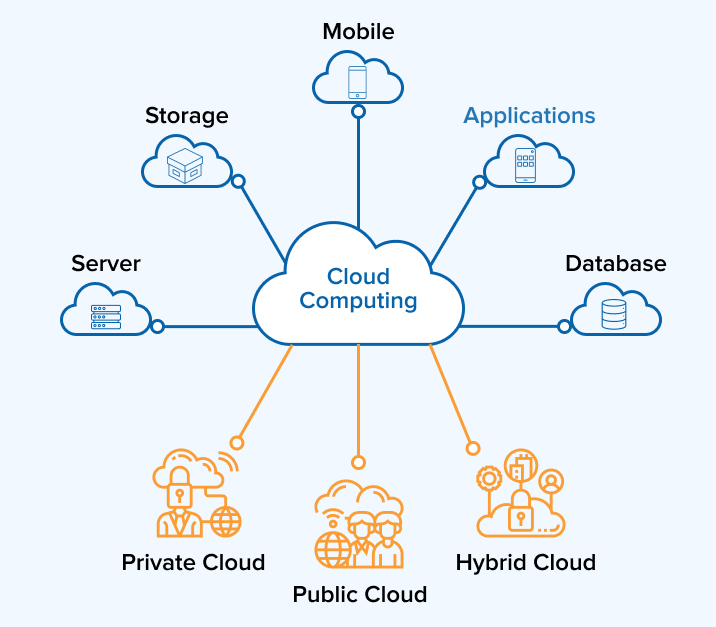LinkDaddy Cloud Services Mastery: Advanced Strategies for Reliable Cloud Services Press Release
LinkDaddy Cloud Services Mastery: Advanced Strategies for Reliable Cloud Services Press Release
Blog Article
Simplify Your Framework With Cloud Provider
As services browse the ever-evolving landscape of technology and information monitoring, the function of cloud services in streamlining framework has actually come to be significantly prominent. Just how can companies effectively navigate this shift and genuinely open the potential of cloud services for simplifying their facilities?
Advantages of Cloud Services
Cloud solutions offer a streamlined technique to managing IT framework, providing businesses with flexibility, scalability, and cost-efficiency. Among the key benefits of cloud solutions is the scalability they supply. Services can conveniently scale their sources up or down based upon demand, ensuring they only pay for what they use. This flexibility is specifically advantageous for companies with fluctuating needs or those experiencing development.
Furthermore, cloud solutions get rid of the requirement for companies to buy expensive software and hardware. This cost-efficiency is a considerable benefit, especially for little to medium-sized business aiming to decrease in advance costs. By utilizing cloud solutions, organizations can access high-quality IT sources without the significant price associated with typical facilities arrangements.
Moreover, cloud services supply companies with the adaptability to access their data and applications from anywhere with an internet connection. This degree of accessibility improves cooperation amongst teams, makes it possible for remote work, and boosts total efficiency. The flexibility provided by cloud services equips businesses to adjust promptly to changing market conditions and customer needs.
Price Savings and Scalability
In addition to the operational advantages highlighted previously, the assimilation of cloud solutions right into a business's infrastructure generates substantial cost savings and enhanced scalability. Cloud services supply a pay-as-you-go design, enabling organizations to range sources up or down based on present requirements, therefore staying clear of the costs related to maintaining excess capacity. This flexibility makes it possible for companies to adapt quickly to varying needs without sustaining unneeded expenditures.
Additionally, cloud solutions eliminate the demand for ahead of time financial investments in software and hardware, decreasing capital investment. Operating costs are also minimized as firms no much longer need to manage and maintain physical web servers, bring about reduced energy usage and IT staffing costs. In addition, cloud solutions supply automated updates and maintenance, ensuring that the framework stays secure and current without requiring hands-on interventions.
Boosted Safety Steps
Executing strict safety steps is extremely important when incorporating cloud solutions right into a company's facilities to secure sensitive data and make sure compliance with sector regulations. Cloud solution suppliers use boosted security attributes such as information file encryption, firewall software defense, and multi-factor authentication to mitigate cybersecurity threats.
Moreover, normal safety audits and compliance analyses assist identify vulnerabilities and make certain adherence to industry criteria. Companies can additionally gain from features like computerized protection updates and real-time danger tracking offered by cloud company. By prioritizing protection measures and remaining positive in resolving prospective risks, businesses can with confidence leverage cloud solutions while safeguarding best site their valuable information from unapproved gain access to or violations.
Transitioning to Cloud Framework
To effectively incorporate cloud services into a company's framework, a structured strategy that attends to the shift in the direction of cloud-based services is crucial. Transitioning to cloud framework includes cautious preparation and implementation to guarantee a smooth movement procedure. The first step is to examine the current infrastructure and figure out which systems and applications appropriate for movement to the cloud. This assessment must consider aspects such as data sensitivity, compliance demands, and efficiency requirements.
Once the evaluation is complete, a movement technique ought to be created. This method must detail the timeline, sources, and obligations for moving each component to the cloud. It is essential to communicate this strategy plainly to all stakeholders to ensure alignment and decrease disruptions during the change.
During more helpful hints the movement procedure, monitoring and testing are critical to determine and resolve any concerns promptly. Regular checkpoints need to be developed to track progression and make necessary changes. Additionally, training for workers on making use of cloud services should be provided to guarantee an effective shift and make the most of the advantages of the brand-new facilities.
Finest Practices for Cloud Adoption
Successful fostering of cloud services rests on the strategic positioning of service goals with technical capabilities and business readiness. To make sure a smooth change to the cloud, organizations must start by carrying out a detailed analysis of their present framework and identifying which work are best fit for cloud migration. It is important to entail essential stakeholders from various divisions in the decision-making process to obtain buy-in and attend to any problems beforehand.
One more best method for cloud fostering is to prioritize safety and conformity. Organizations should very carefully review the protection actions provided by cloud service carriers and make certain that their data is shielded according to market requirements and regulative demands. Applying robust data file encryption, accessibility controls, and routine protection audits can assist alleviate threats connected with cloud adoption.

Conclusion

As organizations browse the ever-evolving landscape of modern technology and information monitoring, the duty of cloud services in streamlining facilities has actually become increasingly famous - universal cloud Service. Just how can businesses successfully browse this change and genuinely open the potential of cloud services for streamlining their infrastructure?
Cloud services provide a structured approach to managing IT facilities, offering services with versatility, cost-efficiency, and scalability. By utilizing cloud solutions, services can access high-quality IT resources without the large cost tag linked with standard infrastructure configurations.
To ensure a smooth shift to the cloud, companies ought to begin by performing a thorough evaluation of their present facilities and recognizing which workloads are best suited for cloud migration.
Report this page